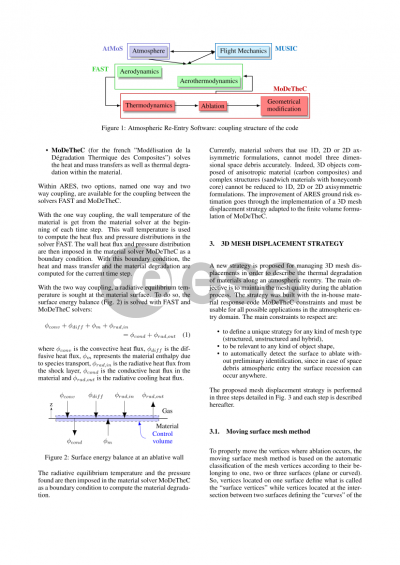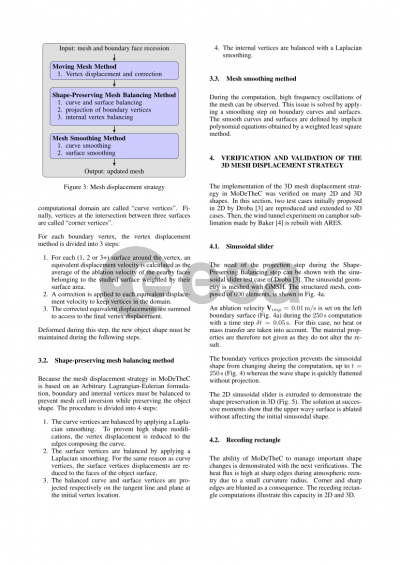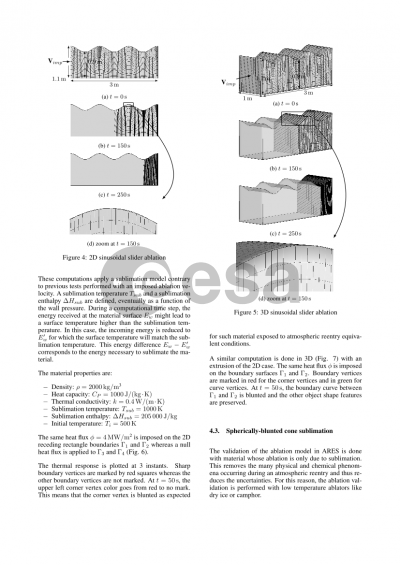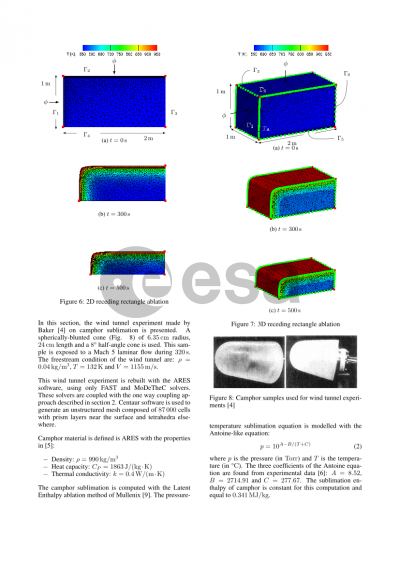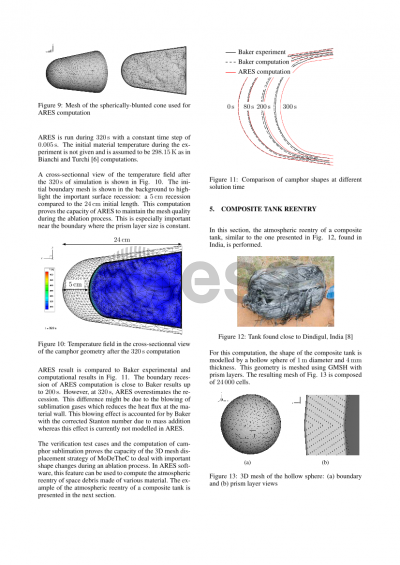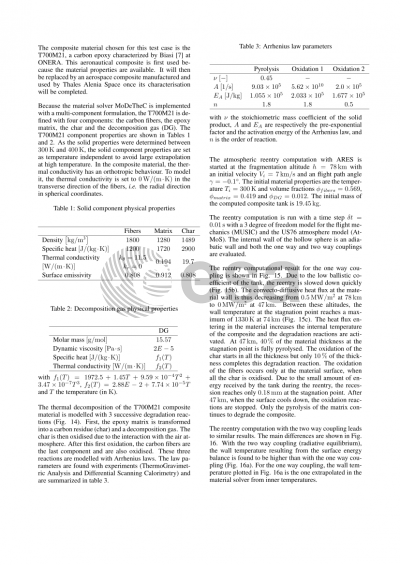Document details

Abstract
Since 1957, thousand of satellites have been launched into space. This human activity generated a large amount of non functional orbital objects, called “space debris”. According to ESA, more than 34 000 space debris larger than 10 cm are in orbit and represent a high risk for the operational satellites in orbit and ground safety. Regarding atmospheric reentry, it is assumed that between 10% and 40% of the reentering mass (ie. around 32 000 tonnes since 1957) already reached the ground. So, the estimation of the total casualty area became a major issue for all space actors and especially for CNES which is in charge of ensuring the right application of the French Space Operation Law (LOS) by 2021 for French satellites-and-launchers operators and launch operations from French Guyana spaceport.
In order to predict the risk induced by orbital debris during their atmospheric reentry, accurate simulations of the thermochemical ablation of their material are required. Atmospheric reentry is computed at ONERA with the in-house ARES code (Atmospheric ReEntry Software) which couples 4 independent codes: MUSIC (flight mechanics), FAST (aerodynamics and aerothermodynamics), ATMOS (atmospheric conditions) and MoDeTheC (heat and mass transfers as well as thermal degradation within the material). While FAST is based on analytical models, MoDeTheC solves the heat equation by finite volume discretization. Currently, material solvers that use 1D, 2D or 2D axisymmetric formulations, cannot compute three dimensional space debris accurately. The improvement of ARES ground risk estimation goes through the implementation of a 3D mesh deformation method adapted to the finite volume formulation of MoDeTheC.
As space debris may experiment any kind of motion, any part of the debris may be exposed to ablation. Moreover, the extreme aerothermodynamic conditions experienced during atmospheric reentry may lead to ablation and fragmentation. Thus, the final shape of the debris can be very different from the initial one. Therefore an automatic boundary condition tagging is performed as a function of the external flow conditions and of the debris shape.
The present paper proposes an overview of the 3D mesh displacement strategy for the simulation of the material degradation (ablation, pyrolysis) during atmospheric reentry of space debris as well as validation test cases.
Firstly, the verification of the strategy implemented in MoDeTheC is done by comparison with analytical solutions. Then the results of the simulation of the thermal degradation of the material using the proposed method are compared to wind tunnel measurements. For these computations, MoDeTheC and FAST are used to calculate the evolution of the convective heat flux distribution according to the shape changes and thus to validate the ablation process. Finally, a complete atmospheric entry of a carbon composite tank is performed with ARES (involving the four solvers MUSIC, ATMOS, FAST, MoDeTheC). In this frame, an analysis of the influence of the ablation model is proposed.
Preview

